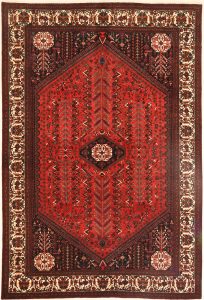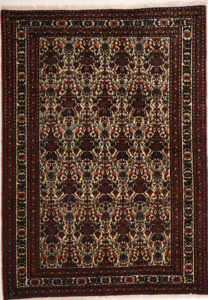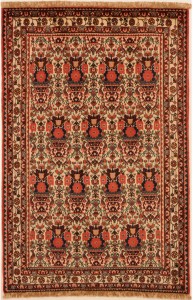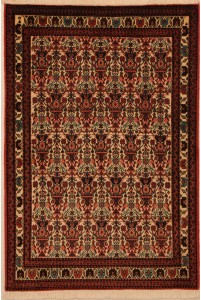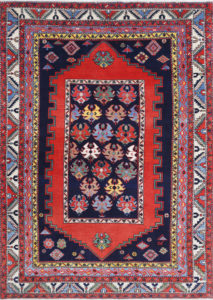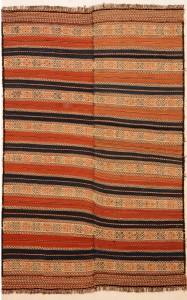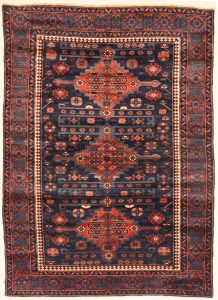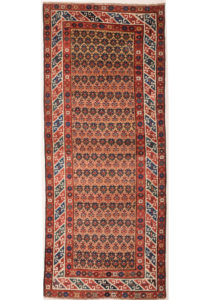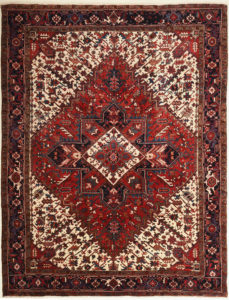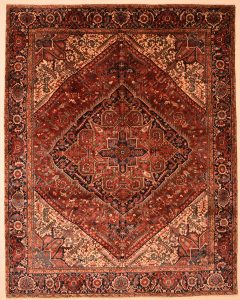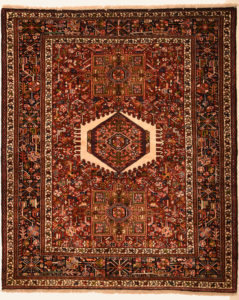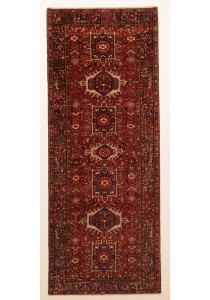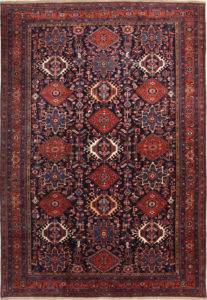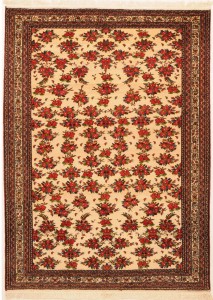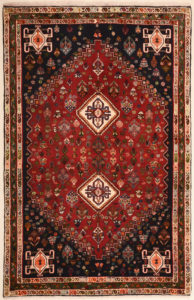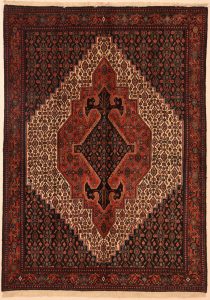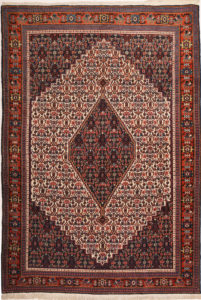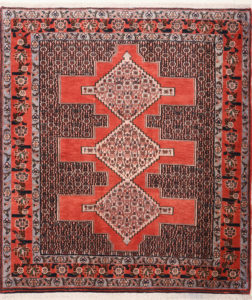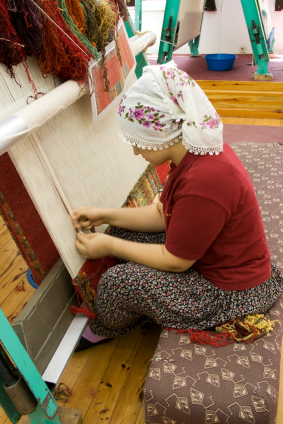Village rugs are produced by weavers that are settled in one location. They are different from tribal rugs that are produced by nomadic tribes that moved from one location to another. City rugs are produced on order in structured settings in bigger towns. Each type of Persian rug has their own unique characteristics.
Village rugs are higher in quality than tribal pieces. This is because they are woven using a looms that are fixed in one place. The weavers also have easier access to modern materials and dyes. Village rugs are in high demand because of their versatile colors and designs, higher quality and durability, and great value for money.
A snapshot of the seven types of village Persian rugs showcases the different styles used in the patterns, colors, and even the materials and types of knots used.
7 Types of Village Persian Rugs Video
Abadeh
Abadeh rugs typically have a dense, compact pile with warm, pleasant colors, and traditional Persian designs such as Vase, Herati, and Zal al-Sultan.
Heybatlu is the most common design seen in Abadeh rugs. This is made up of a single large hexagonal medallion in the center with smaller medallions at each corner.
The field is filled with smaller motifs of flowers, trees, birds, and four-legged animals. Abadeh rugs are very hardy and durable.
Azarbaijan
High quality materials and superior weaving techniques are the hallmark qualities of Azarbaijan rugs. One of the most interest aspects of these rugs is that the designs, colors and patterns are thoughtfully chosen to tell a story through the images.
Weavers incorporated everyday items such as flowers, birds, and animals into their designs using colorful combinations of red, yellow, blue, green, and cream.
Heriz
Heriz rugs have several distinguishing features that set them apart from other village Persian rugs. Most Heriz rugs have a large central medallion surrounded by over-sized corner medallions. Every inch of the design surface is covered with intricately detailed patterns in darker color schemes. Double and even triple outlining is commonly seen.
Heavier and denser, Heriz rugs are extremely durable and a great choice for common areas.
Jozan
Jozan rugs have a wool pile on a cotton foundation. They are usually double-wefted with blue weft threads, and feature a large central medallion surrounded by geometric floral motifs that form an all-over pattern. The weavers incorporate pleasant color schemes of red, blue, ivory, and pink shades into their attractive designs.
Karaja
Bold motifs resembling leaves, insects, and crabs usually in bold colors such as saturated red, indigo and terracotta colors distinguish Karaja rugs from most other village Persian rugs. A typical design consists of a latch-hook diamond motif flanked vertically by two simple geometrical medallions. Three strips in navy or royal blue form the border in most of these rugs.
Qashqai
The diamond medallion surrounded by smaller motifs representing flowers, birds, animals, and people is the most common design feature of Qashqai rugs. These designs are woven in a wide palette of colors including varying shades of reds, blues, greens, and ivory.
Senna
Senna rugs are known for their intricate patterns, fine weaves, and delicate colors. These rugs commonly feature blossoms, leaves, and trees in repeat patterns enclosed within finely detailed borders. The pile is made of fine wool yarn, while cotton is used for the warp and weft.
